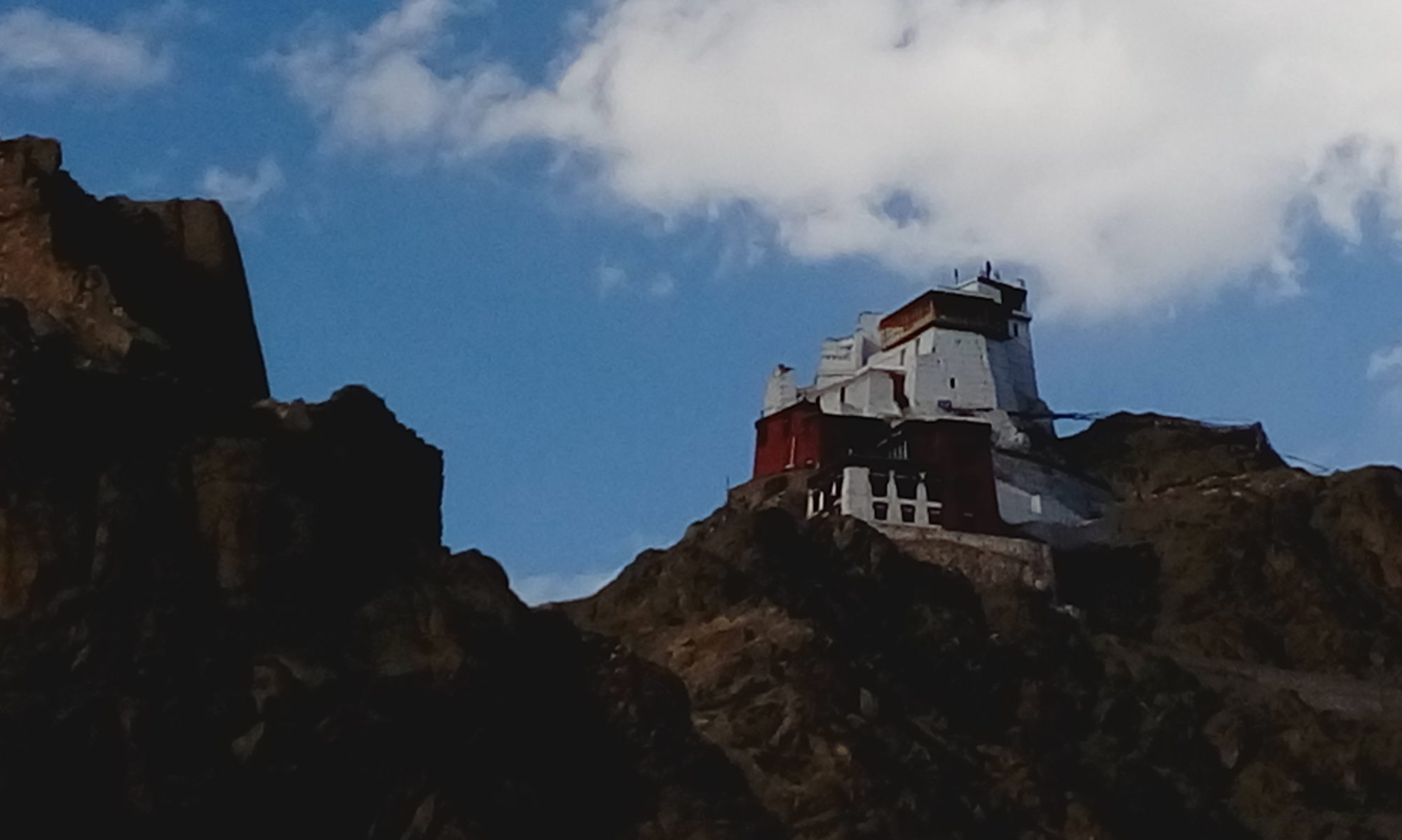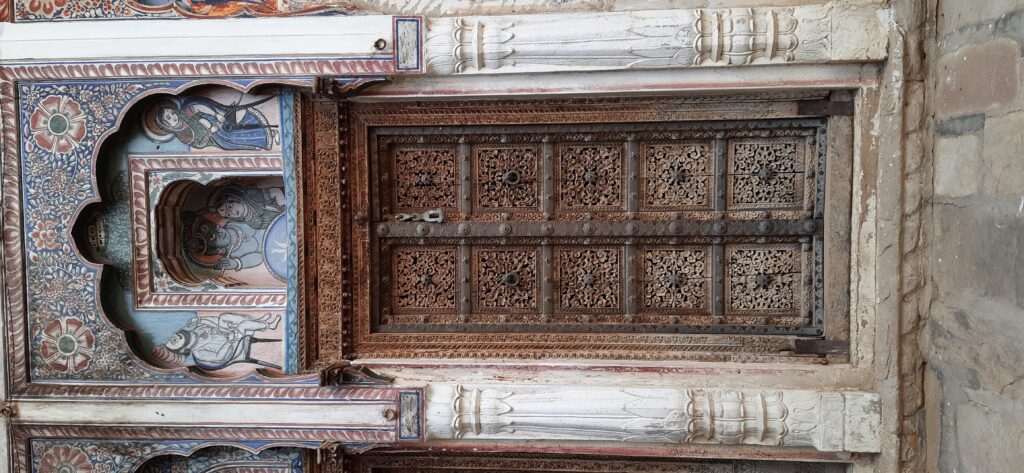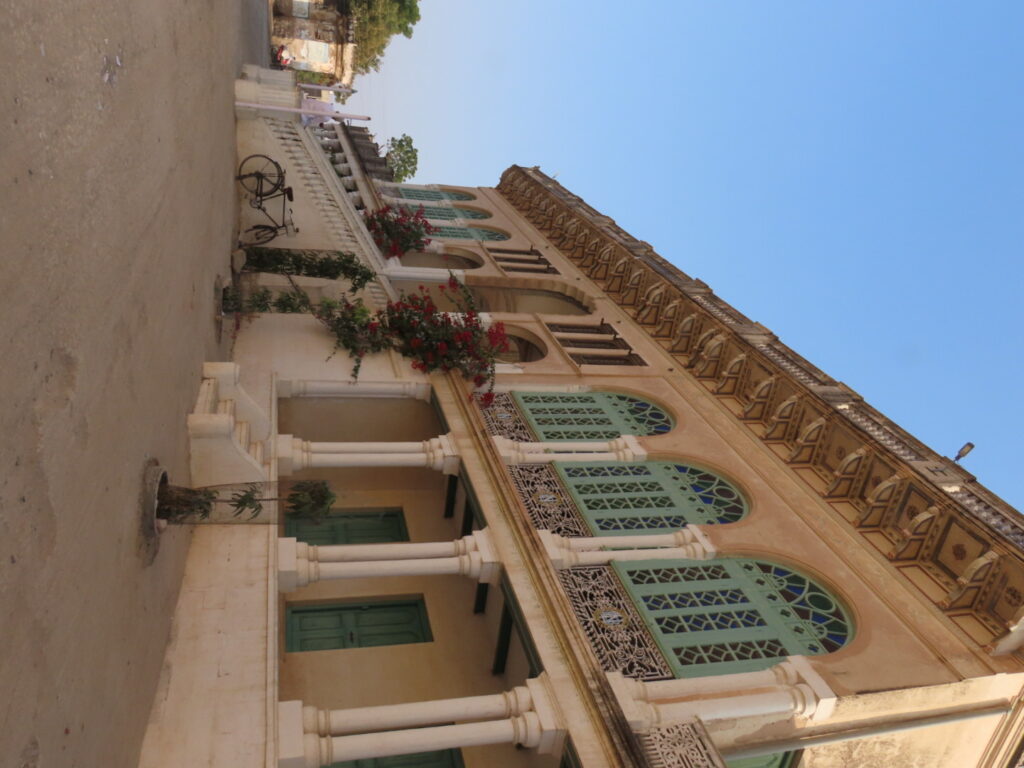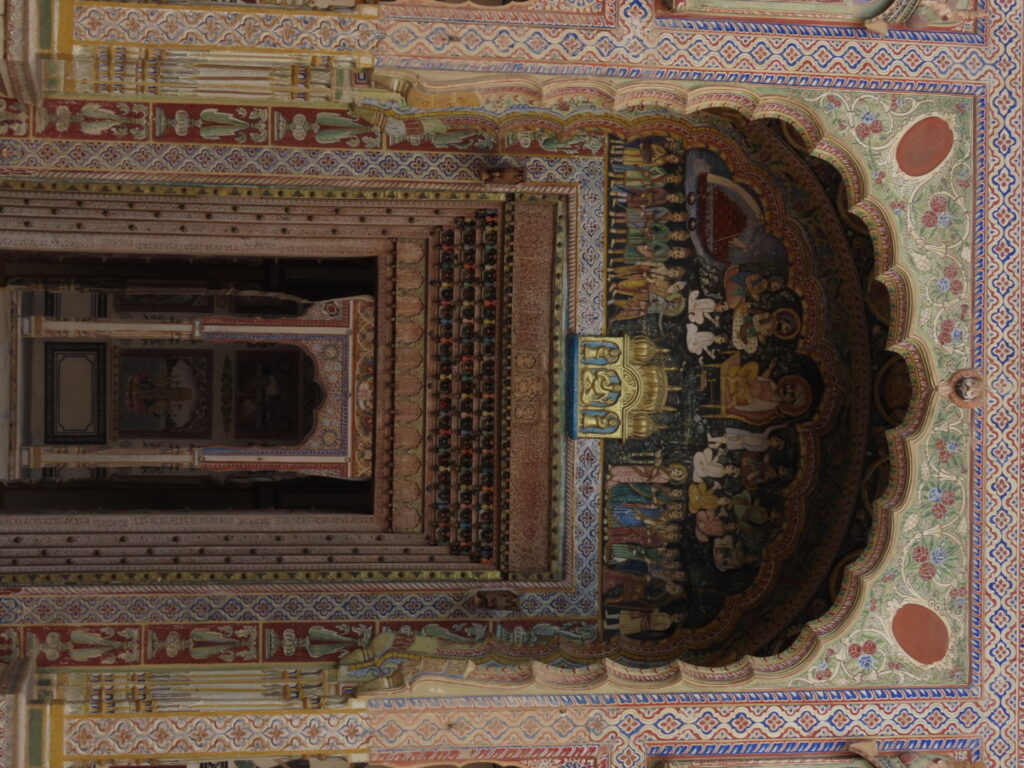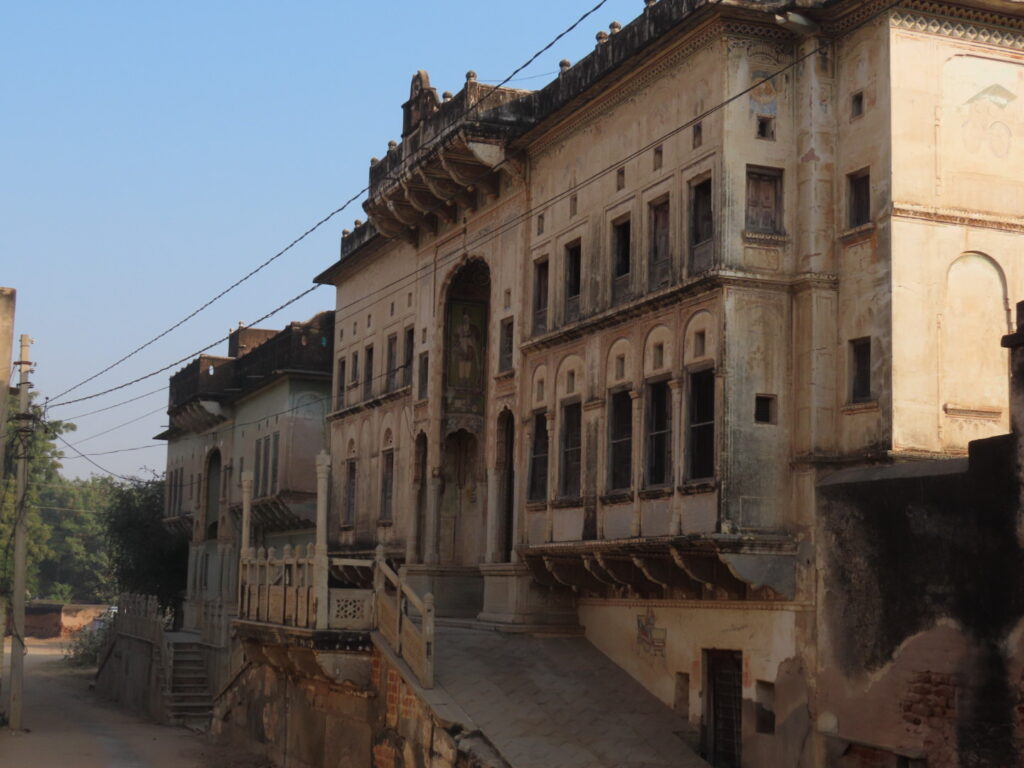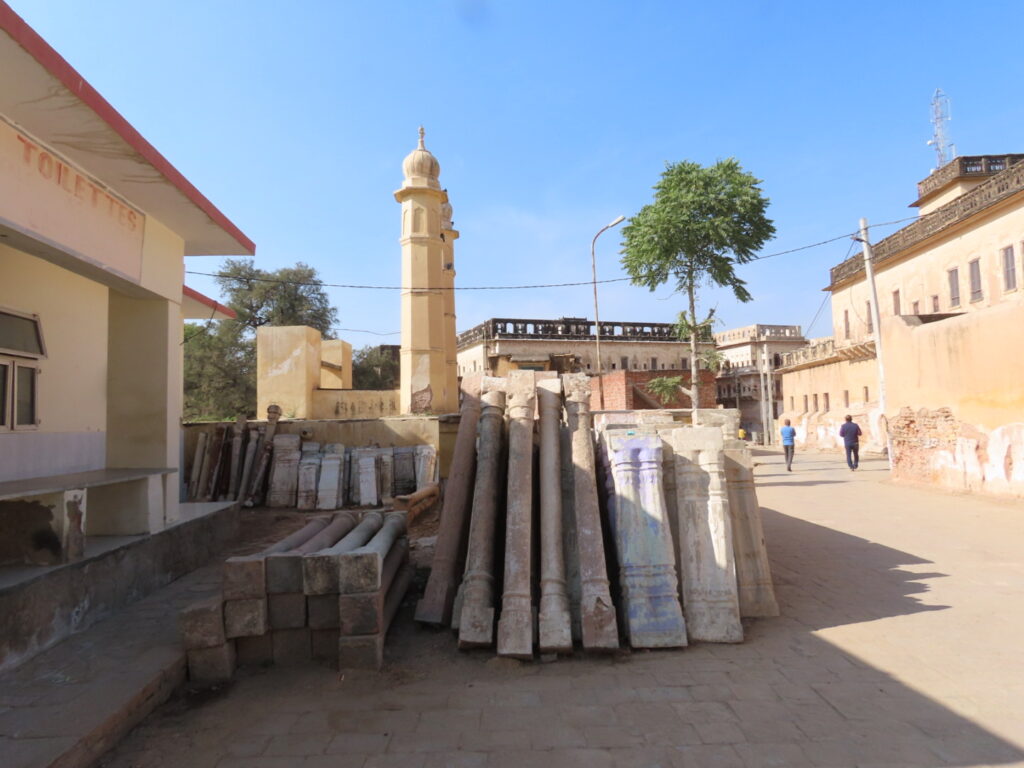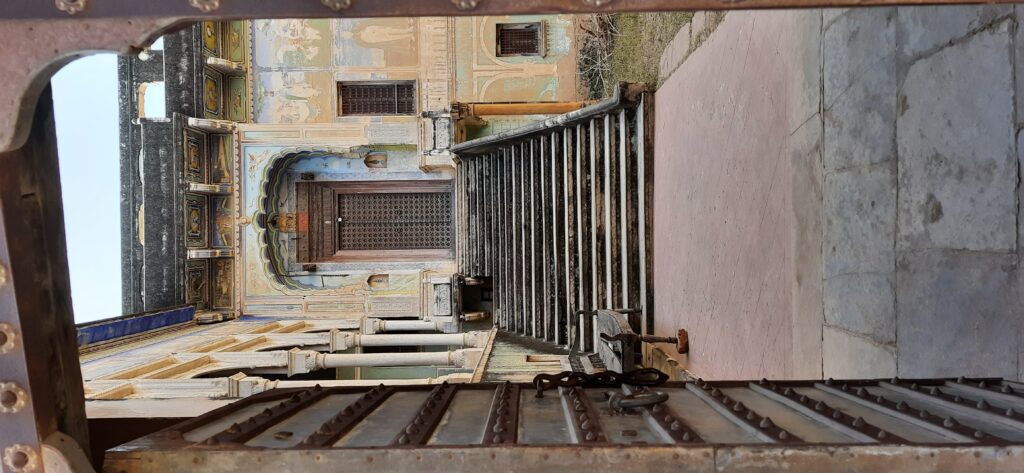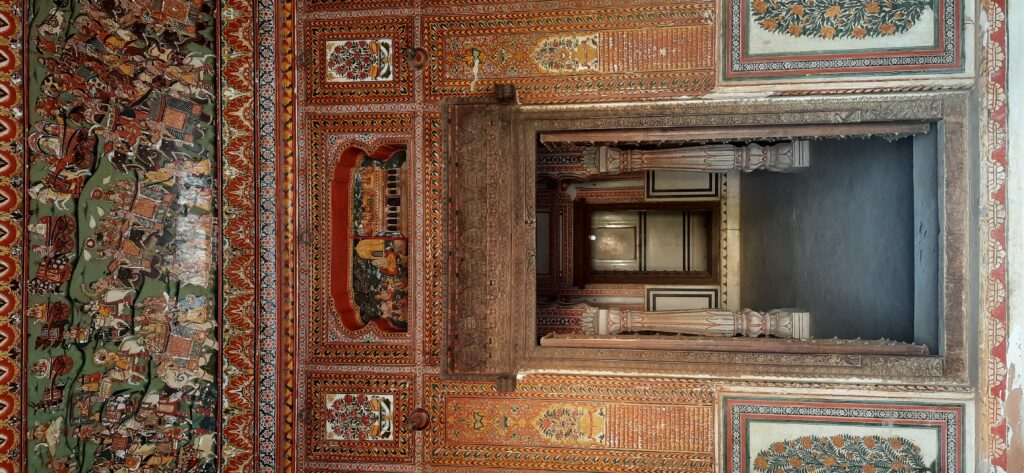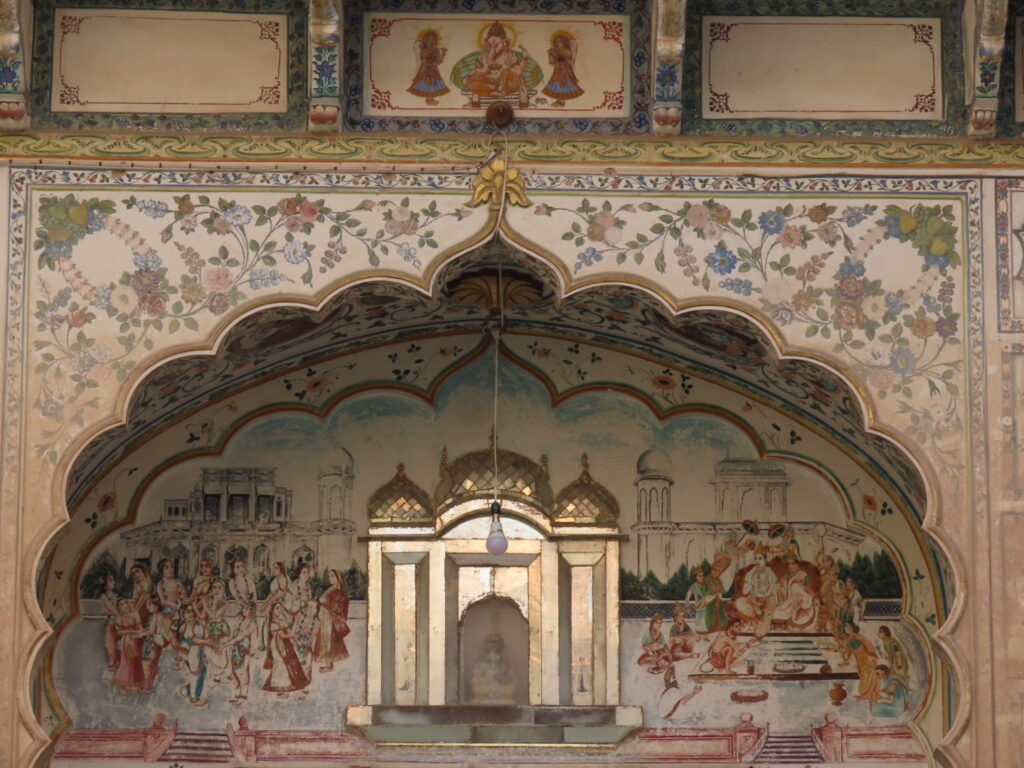‘Stop, stop! Oh my God!!’We are navigating the winding lanes of Fatehgarh enroute to Mandawa and at a time when I should be looking out for the next turn on the map; I have been waylaid by the facade of a haveli. The resolutely padlocked tall door is crowned with a carved wooden frame but it’s the arch before it which looks like an art aficionado’s wet dream. The stone canopy in pastel colours with portraits in stucco lined oval frames and designs is a masterpiece in itself. On a side, the veranda’s wall has jumbo sized elephants on a march, safe behind a cast iron grill with Queen Victoria’s profile. Welcome to Shekhawati! Where the mansions lining the dusty lanes don’t hold art but are objets d’art themselves.
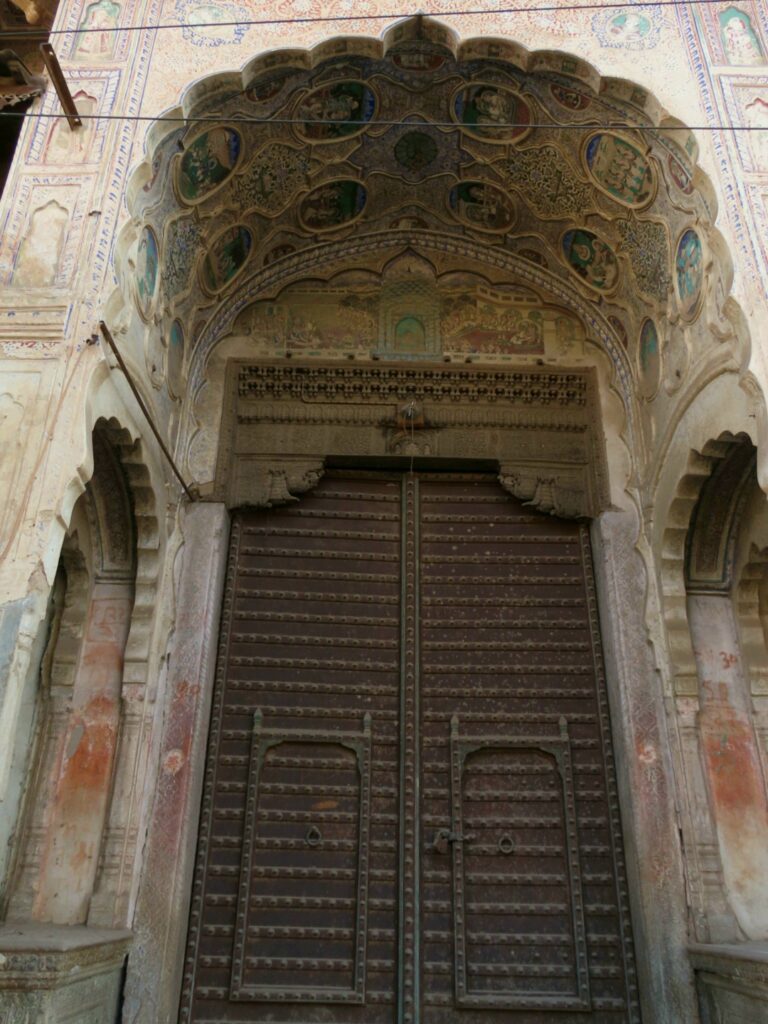
Time and Space Warp
The drive to Mandawa is dotted with lush golden green mustard fields. The colour of eye tonic in a desert! Driving into a charming market street tells us we have reached our destination. Our guide for the day is waiting for us outside the most prominent landmark of the town- the fort. Acquaintance made, we dive behind Mr. Om Shekhawat (Can’t get away from them in this land!) into a narrow path outside the fort wall and emerge beside a tiny well preserved haveli. The frescoes look fresh but the imagery is old and on the arch flanking Ganesha on one side the marriage scene of Shiva-Parvati plays out and on the other Rama is dealing with Shiva’s bow at Sita’s swayamvar. Nearby another haveli has been refurbished into a small hotel. Outside the fading frescoes show a man in riding boots and hat on a chair while a woman plays a gramophone on a veranda with a peacock pecking nearby. Inside I find framed prints of mythological figures with reference to a trading company in Manchester. Time takes a quantum leap in a short space. We discover through the day that time and space has a kitschy co existence on the walls here.
Time stands still at- Mystic Maheshwar : At the Center of the Universe
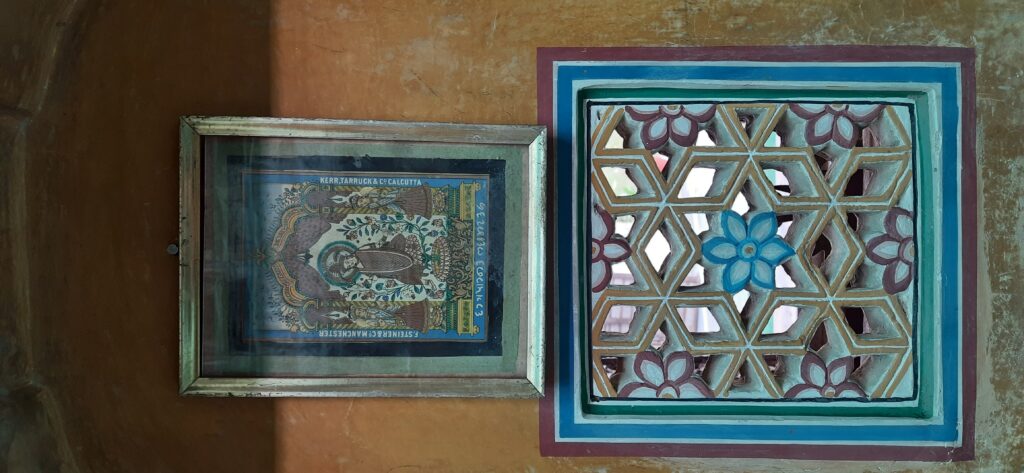
Timeless Template
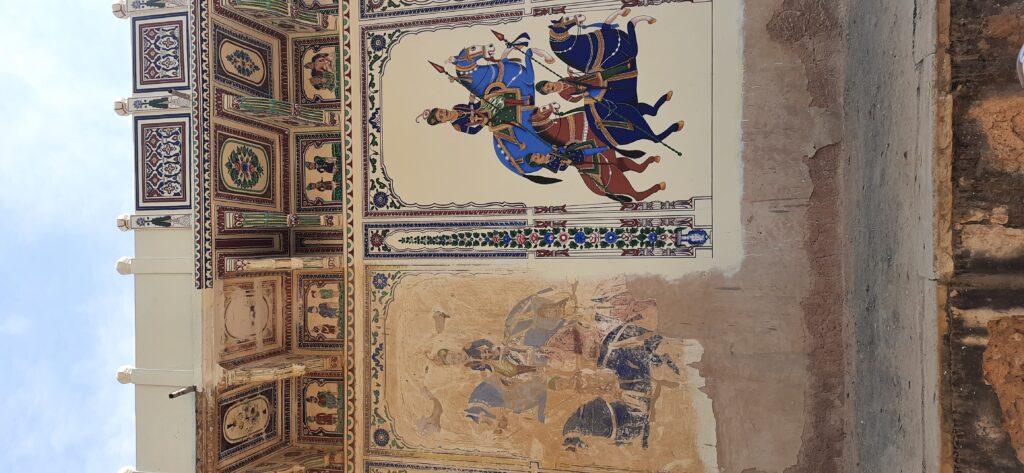
The Chokhany double haveli turns out to be the ancestral property of a classmate and is set inside a joint compound. One is being restored. It is an introduction to the architectural template of havelis. A ramp leads up to the main gate. As one steps through and into the common area, next to the stairs leading up to one haveli there is a room with a veranda. With wide doors this room is where business was conducted and guests received. A solid iron safe sits next to a door like a doorkeeper. There are small balconies within where the women could discreetly join in and eavesdrop. The punkhawala sitting outside whose entire purpose of existence was to keep his master cool had no such insights into the dealings. Preferably he had to be deaf to do this job or at the least the ears would be plugged with cotton.
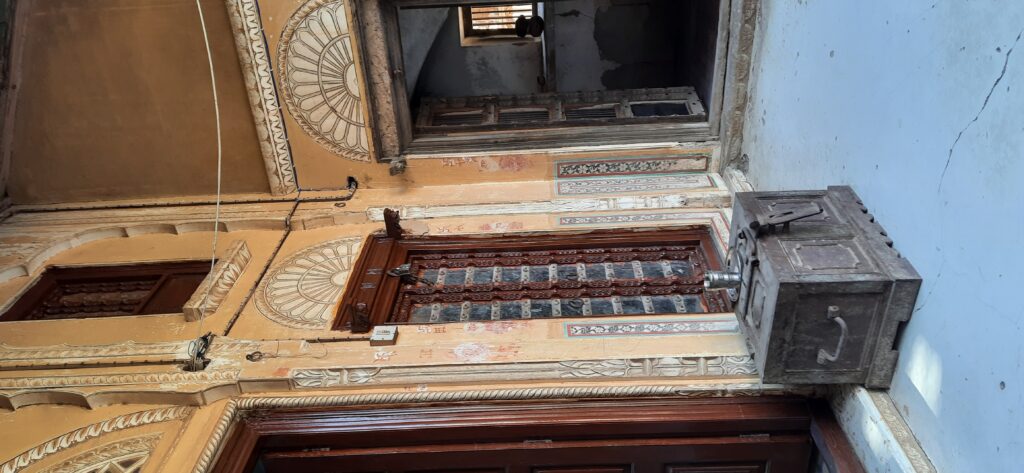
The carved door to the main haveli has torans hanging on them. Put up during a daughter’s wedding for the groom to touch before being let in, I thought they are taken down subsequently, but not here. Inside is a courtyard surrounded by bedrooms, common dining areas, kitchens and a narrow room to keep the most precious commodity here-water. The walls plastered with crushed shells are still lustrous and cool to touch. In an old system of rainwater harvesting the drains around the courtyard fill up a tank below. The servant’s quarters are on a side in the base and they open into a big courtyard for livestock at the back where the colours of the curving corbel have weathered the vagaries of nature beautifully. The twin haveli is a mirror image.
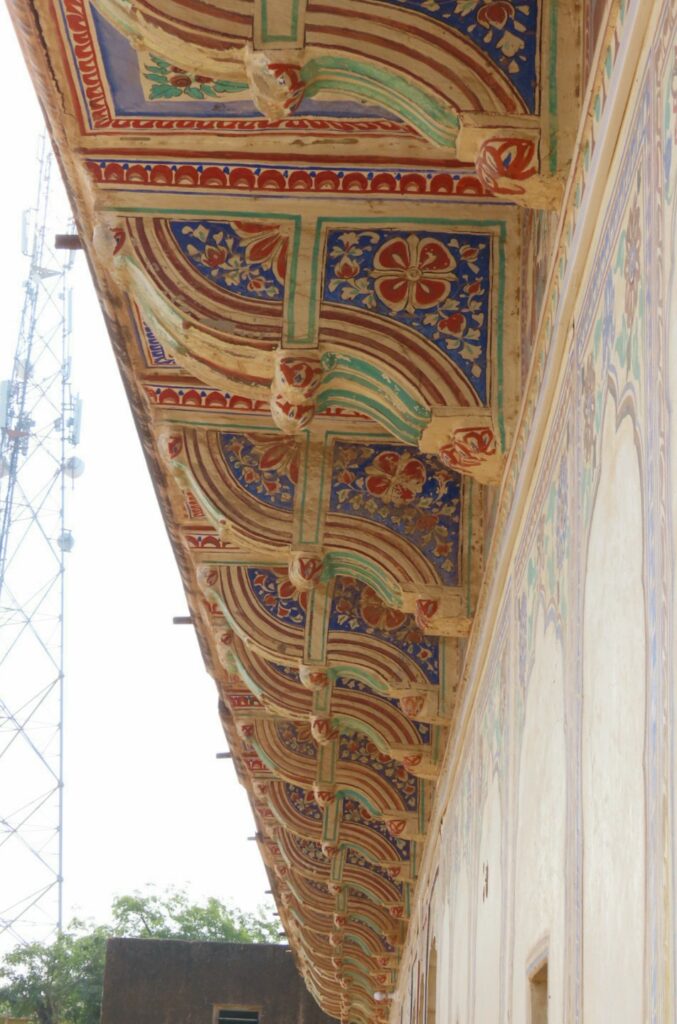
Experience living the Shekawati life at- Dera Jaipur: A Homestay for Stellar Style and Exceptional Experiences
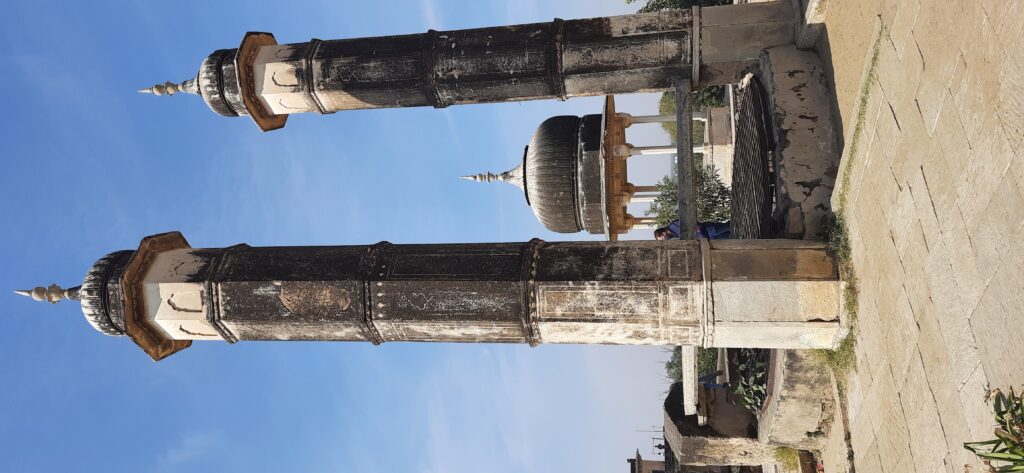
Well Watered
Driving in this region one has often glimpsed wells marked with pillars. At a place near Jhunjhunu the pillars were shaped like slender spires of a temple. Mandawa is dotted with these tall markers. Four columns denote a public and two a private well. A rambling walk with glimpses of artists restoring a recently bought up haveli brings us to Mandawa Kothi. There is a private well opposite it. Like the houses here it has a high plinth and seems fathomless. There are small chattris on all corners and small tanks with spouts to store the water drawn up by animals. It would be an ideal place to congregate in the evening. It’s steps look invitingly perfect for a cup of coffee this winter morning too.
Discover the colours of a stepwell and others in- Harlequin Holi at Todaraisingh
Oh so Opulent
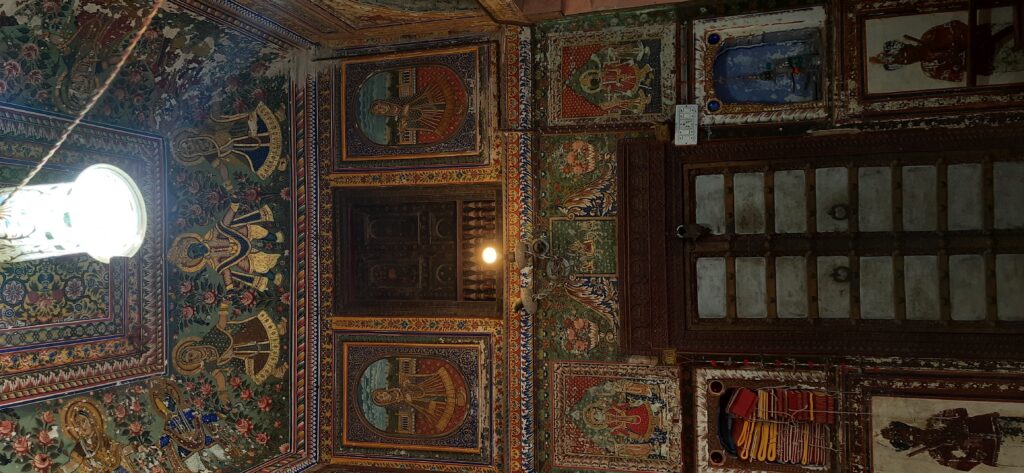
An art deco building near the Jhunjhunwala haveli looks like a movie set has been transported straight from Marine Drive. The owner of the Jhunjhunwala haveli, to show he had arrived, lavished not only riches but attention on the interiors of his ‘business room’. Every inch is painted in rich hues with ethnic motifs and designs. Family portraits vie for attention with mythological ones touched up with real gold. Account books still lie stuffed into niches.
A niche experience by itself was –Disconnecting with the World on a Mountain Isle at Shaama
Italian Hangover
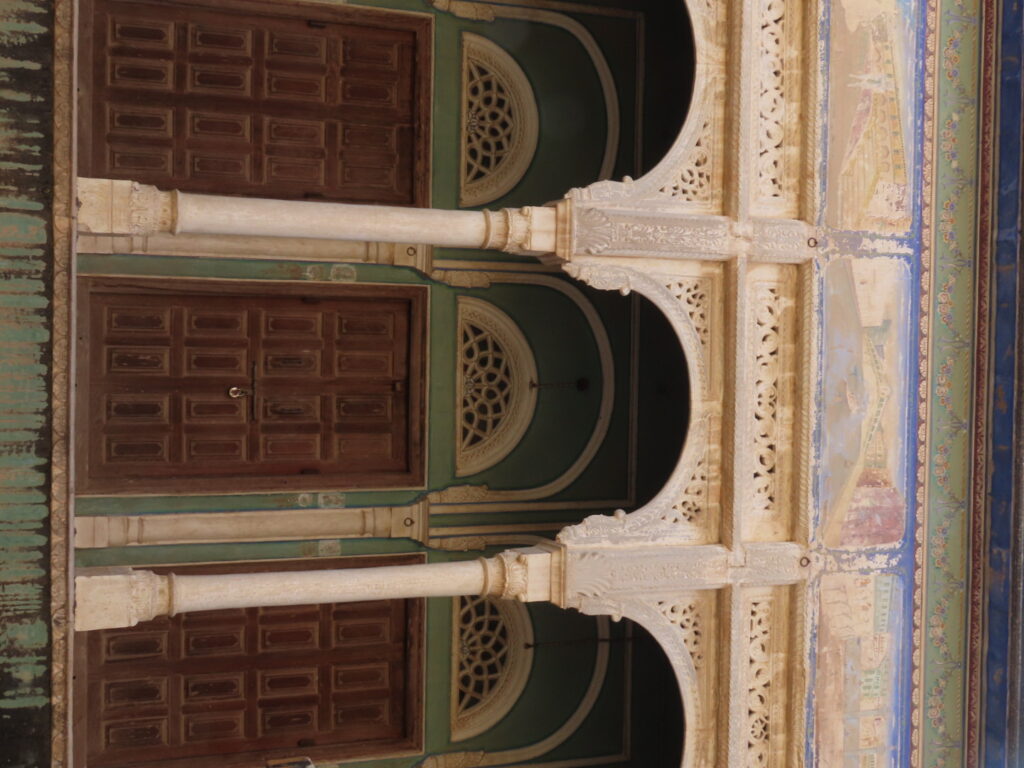
Opposite the Goenka haveli with its contrived chaos full of bric-a-brac inside and interesting frescoes outside stands the Robin eggshell blue Murmuria haveli. The eaves have sceneries from much greener pastures with lakes, conifer trees and sunsets over mountains. It stands apart as a whimsical piece of art with an Italian hangover. A slightly defaced Nehru/Bose astride a horse waving the tricolor in the courtyard would beg to differ. It’s owner visited Venice once and described it to an artist who probably never stepped out of this area. In a testament to the artist’s imagination, as fertile as his paintings, he reproduced an entire brochure of Venice complete with St Mark’s Square etal above the pretty arches in carved stone of the veranda. On another wall a beautiful woman stares the world down, far from the coy and comely images here. I wonder who she was to be immortalized so….
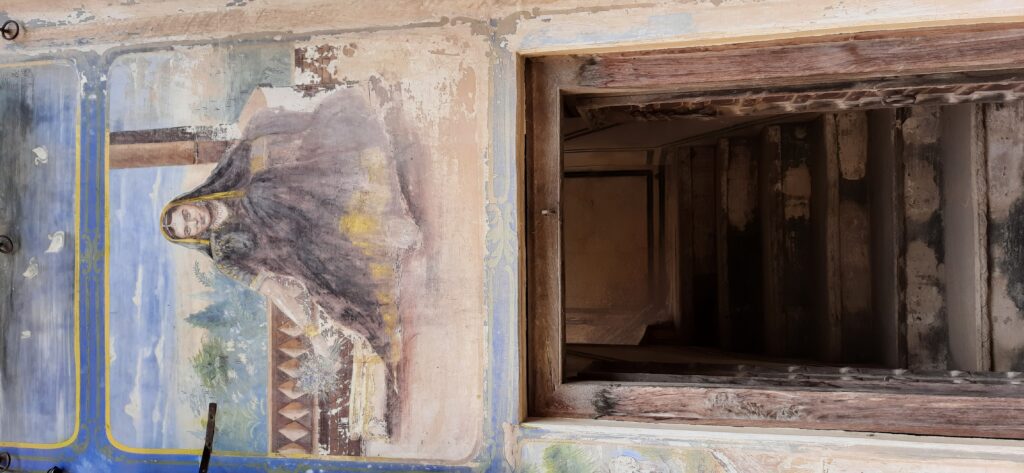
A Bard Sings a Story in Jhansi – To immortalize another woman…
Fate Nails Some Fails Some
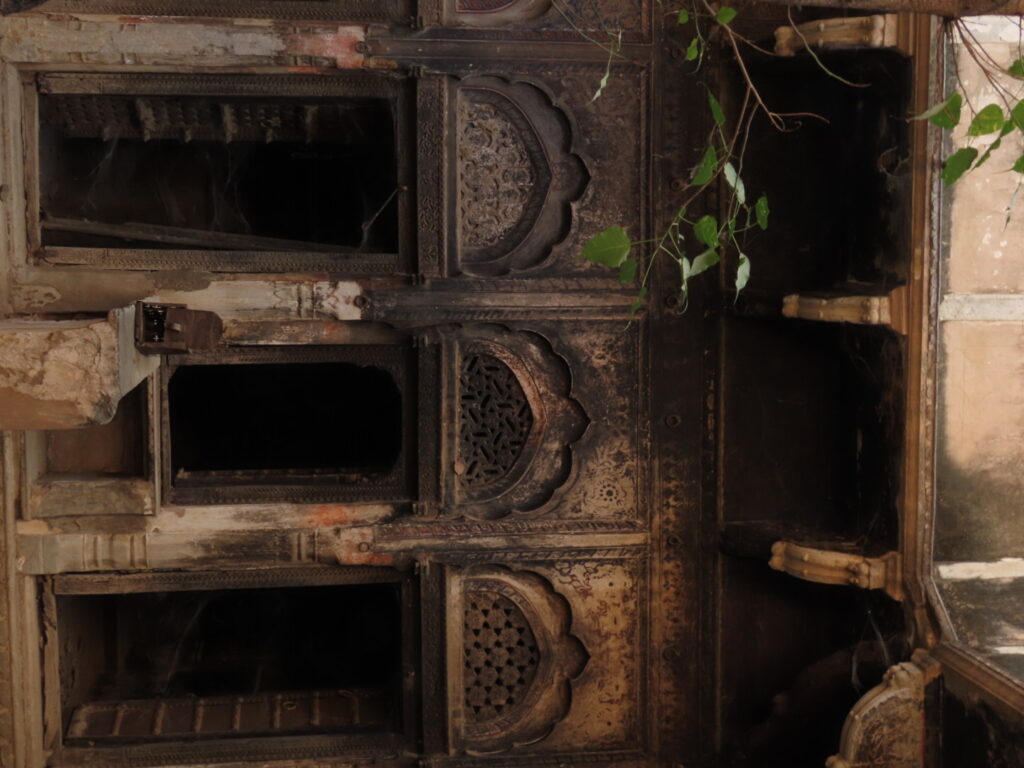
One of the Goenka double havelis adjoining the Murmuria haveli has recently been opened after decades. A long train with all manners of assorted passengers makes for a panel just below an overhang. In the neglected years a peepal tree has thrived in the inner courtyard where the fine woodwork and arches can barely be concealed by the blackened walls. Outside a fresco with a chillum smoking elephant ready to go on the rampage is being touched up. Today, only the bulls are loose in the lanes and the man has had to show off his matador toes occasionally to avoid being flattened like a cow pat!
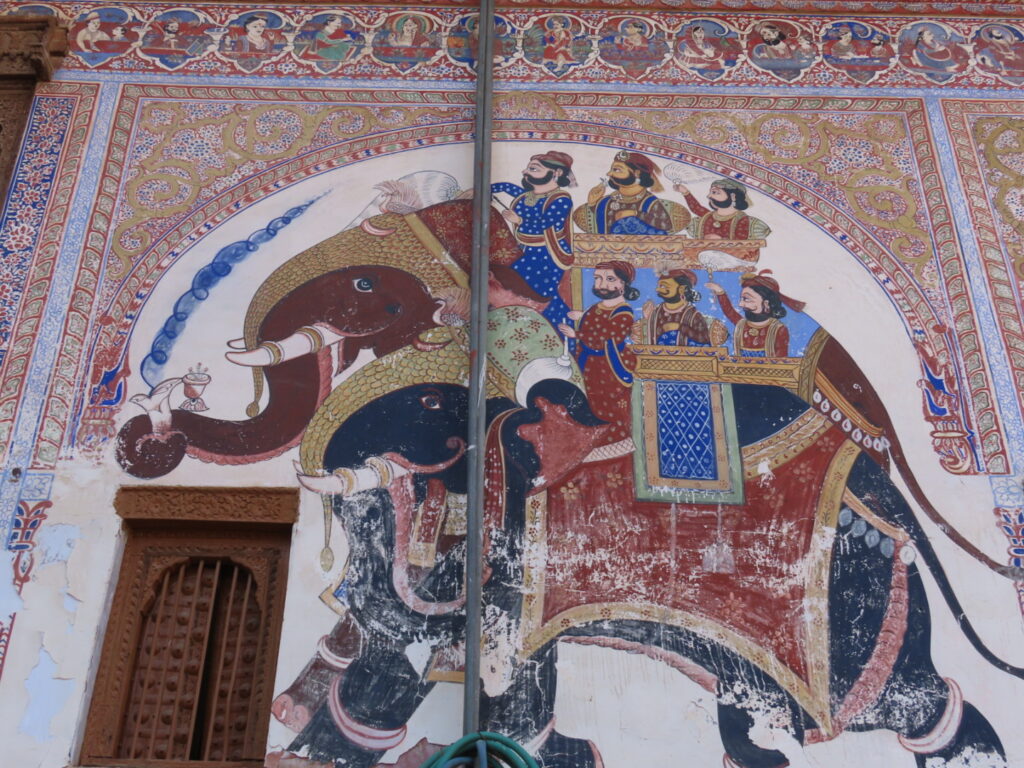
In the main market we cross a cobbler with his orders in Urdu nailed to a tree and come to a haveli now housing a bank. It has a side show of the wonders of modern inventions in faraway lands enthralling the locals. I really doubt the Wright brothers flew over Mandawa! Unfortunately the wall is also defaced by modern contraptions of today.
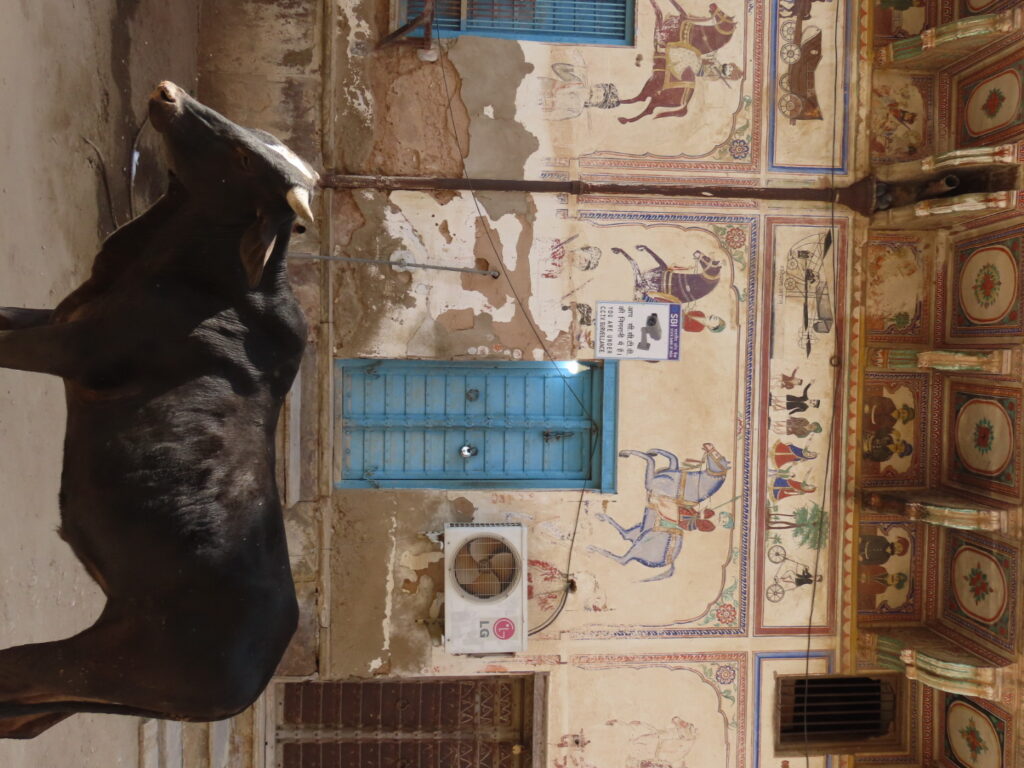
There are havelis waiting to be explored still in the meandering wide lanes of Mandawa but even on a winter noon the sun is now beating us back into cooler confines. Another time, other places to continue our sojourns to Shekhawati….
Fact File-
1. Distances from Mandawa-
Delhi- 250 km
Jaipur- 170km
2. Places to Stay-
There are some havelis which have been converted to small hotels.
Mandawa Fort has an upscale hotel called Castle Mandawa.
3. Most havelis charge an entry fee now, varying from 50/- to 100/- per person.
4. Best time to visit- Nov to Mar. The nights will be cold and days warm.
5. Keep the walking shoes on even if you feel they will spoil your Insta pics!
